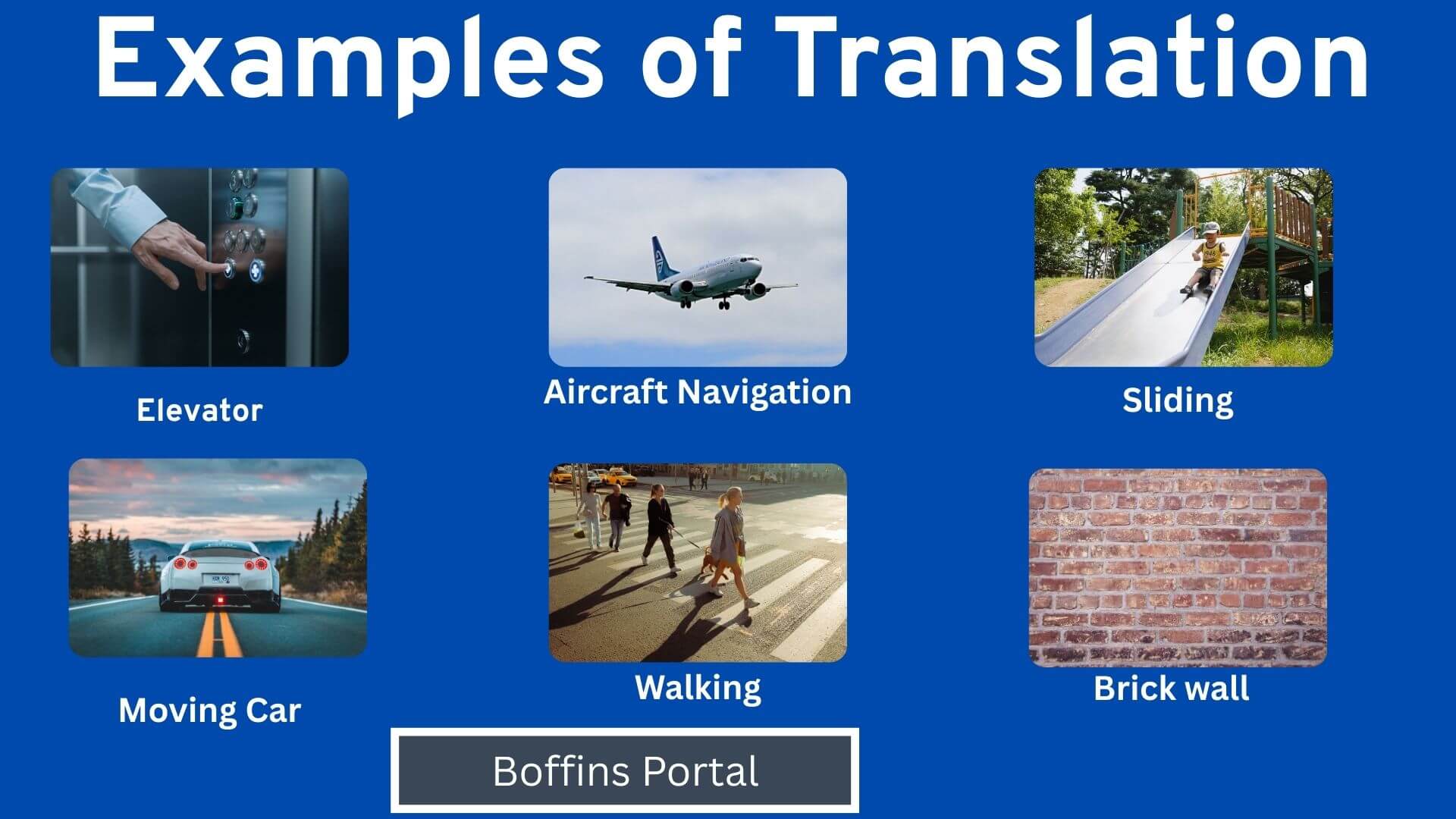In mathematics, translation refers to shifting a figure or object in a specific direction without changing its shape, size, or orientation. Every point of the figure moves the same distance in the same direction.
Walking, running, and turning are all types of movement in everyday life. In mathematics, movements through space are called transformations, and translation is one of the simplest types.
A translation is the movement of a shape from one place to another. It changes the position (or coordinates) of the shape on a plane, but not its size or the direction it faces. There is no flipping or rotating—the shape simply slides to a new position.
Shapes can move horizontally (left or right), vertically (up or down), or in a combination of both directions. Positive and negative values are used to represent the direction of these movements.
Because translations occur all around us, they are easy to spot once you know what to look for. Let’s explore some real-life examples of translation to see how this mathematical concept appears in our daily world.

Examples of Translation in Real Life
1. Elevators
Elevators are used to move people and other objects from one floor to another.
Elevators move up and down along a vertical plane.
There is no change in their shape, size or orientation during the movement.
Elevators therefore apply translation in their movement.
2. Airplanes flying across the sky
Airplanes move along a horizontal plane as they move across the sky.
There is no change in shape, size or orientation of the airplane as it moves from one point in the sky to another.
Translation is used in aircraft navigation to ensure aircrafts keep to their course and avoid accidents such as mid-air collisions with other aircrafts.
3. Cars driving along a street
Cars driving along a street move along a horizontal plane.
When they move from one point in the street to another, they change position without changing their orientation, shape or size.
This movement is an example of horizontal translation.
Cars moving along an uphill or downhill street will also exhibit vertical as well as horizontal changes in position.
4. Sliding on a slide
Slides are quite popular, especially in playgrounds and waterparks.
Sliding down a slide involves changes in position along both the vertical and horizontal plane.
However, the person (shape) sliding down the slide does not change in shape, orientation or size. This movement is therefore a translation.
5. Escalators
Escalators are designed to help people from one floor to another with greater ease.
When a person climbs aboard an escalator stair, they are moved up or down along a vertical plane. They are also moved along a horizontal plane.
There is no change in the size, shape or orientation of the stairs as they move up or down. This movement is a translation.
6. A brick wall
Brick walls are an attractive feature in a home or any other building.
The pattern of the bricks is a good example of translation. The patterns are achieved by displacement of bricks horizontally and vertically without changing the size, shape or orientation of the bricks.
7. A plane taking off or landing on a runway
Planes taking off move along a horizontal plane.
They also move along a vertical plane as they begin to lift off into the air. The same movement is seen when the plane is landing.
This movement does not involve a change in orientation, shape or size of the plane.
The plane must maintain its course and orientation to avoid accidents.
8. Walking
When you are standing in one place and walk to another location a few steps away, you are performing a translation as long as you do not turn around.
If you are walking from one end of the room to another along a level floor, the movement is only along the horizontal plane.
If you are walking up the stairs, you will be moving along both vertical and horizontal planes.
9. Bartender sliding a glass across the bar
Bartenders have lots of tricks up their sleeves. These tricks can be quite entertaining to patrons.
One common trick bartenders use in serving drinks is to slide glasses across the bar.
As the glass slides across the bar it is moving along a horizontal plane.
The glass does not change in size, shape or orientation as it slides across the bar.
10. Conveyor belts
Conveyor belts are a common feature in production lines. They make it easy to move items from one point to another along the production line.
An item on the conveyor belt moves along a horizontal plane without changing its shape, size or orientation. This is a translation movement.
